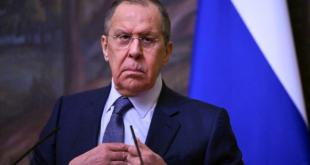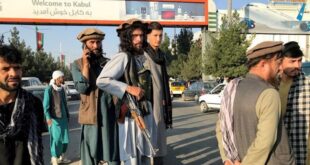JALALABAD, Afghanistan – Arab Islamic radicals who fled Afghanistan in the U.S.-led invasion are coming back, eager to support suicide bombers in their increasingly frequent and effective attacks on Western and Afghan forces.In both Iraq and Afghanistan, young militants feel that “Allah’s victory seems to be drawing near” and see parallels with the stalemating of the Soviet army in Afghanistan in the 1980s and its ultimate withdrawal, said Michael Scheuer, a former CIA official who until 2004 headed a team that searched for Osama bin Laden.
Al-Qaida is bringing back fighters it sent home after the post-9/11 invasion, he said. Al-Qaida leaders have written that “it would take three or four years to get the insurgency restarted. They seem to be pretty much on schedule and are bringing more fighters back into the theater,” he said.
Seth Jones, counterinsurgency expert at the U.S.-based Rand Corporation, said the influx is in the dozens or low hundreds, but is increasing, along with a fervor reminiscent of the 1980s, when Arabs such as the Saudi-born bin Laden flocked to Afghanistan to fight the Soviets.
Attacks have surged. From Jan. 1 to May 31, 2006, 11 suicide attacks took 63 lives. In the same period of this year, 42 attacks killed 171 people, according to AP compiled statistics.
The AP figures only cover incidents in which deaths were reported. The actual number of suicide bombings is likely higher, as many incidents go unreported or uncounted. The AP tally is compiled from hospital, police and military officials cited in news stories, as well as accounts from reporters and photographers at the scene. The security personnel include Afghan military, police and bodyguards.
Battles in Afghanistan are on a smaller scale than in Iraq. However, Afghanistan’s importance to Islamic radicals is great. Bin Laden is believed to be hiding in mountains on the Afghan-Pakistan border.
Andrew Black, co-founder of Thistle Intelligence Group, an independent security studies group based in the U.S. and Britain, says the fight in Afghanistan has an alluring clarity for Arab militants compared with Iraq, where war against the West is mixed up with sectarian strife between Shiite and Sunni Muslims.
“With the Iraqi insurgency beginning to show signs of fissures … recruits will be more readily enticed to travel to Afghanistan, where the enemy is well defined,” said Black. “Should the internecine fighting in Iraq become prolonged, the Afghan venue, and indeed other venues as well, will reap the benefits of added recruits.”
Afghan Army Gen. Ghulam Mustafa Ishaqzai, who has 350 troops patrolling near the Pakistan border, said the Arab influx has been going on for more than a year.
Ishaqzai, a veteran commander who was shot and lost the use of his left arm fighting the Soviets, said suicide bombings were once rare in his command area, eastern Nangarhar province. Since the beginning of the year, there have been a half-dozen, all targeting Western or Afghan forces, he said.
The new Arab recruits usually arrive in groups of four or five, Ishaqzai said, and are led to training camps by an Arab veteran of Afghanistan who dresses like an Afghan and speaks Pashtu.
“The guy who brings them … has been here for years, during the jihad and after. He speaks Pashtu like I speak Pashtu. He doesn’t have to sneak in. He can just walk in. He can drive in on this road right here,” he said, pointing to the highway from the mountains that run along the border between Afghanistan and Pakistan.
At his headquarters three miles from the border, Ishaqzai fidgeted with his useless left arm as he explained the allure of Afghanistan to the Arabs.
The battles today, like those against the Soviet occupiers, are also fought with religious verve. The Taliban and al-Qaida fight under a black flag connoting the participation of Islam’s prophet in their battle for Khorasan, the ancient name for the region centered around Afghanistan.
Khorasan increasingly features in the militants’ videos and the name was taped to the leg of a suicide bomber who killed 24 people in Pakistan’s Northwest Province this spring.
“One should not underestimate the theological importance of Khorasan to aspiring mujahedeen; particularly those who are only able to initially view the conflict through the Internet,” said Black.
Brian Glyn Williams, author of a report for the U.S.-based Jamestown Foundation on Afghan suicide attacks, also said the senior Arab militants are the recruiters and trainers who indoctrinate young men, most of them Afghans, to sacrifice their lives to kill Westerners and their Afghan allies. No Arab has yet been found to have been a suicide bomber.
“Nothing in the Taliban-al-Qaida arsenal seems to have been as effective as a shock weapon against the militarily superior Afghan National Army and (Western) troops as suicide bombers,” he said.
After interviews with Western and Afghan intelligence sources, a former deputy intelligence chief under the Taliban regime, and an occasional spokesman for the Taliban, a grainy picture of the al-Qaida camps emerges.
At camps in Burmal and Zirooki in Afghanistan’s eastern Paktika province, Abu Yahia al-Libi, from Libya, who escaped U.S. custody in Bagram in 2005, trains suicide bombers along with an estimated 150 Arab militants. He too is releasing videos through al-Qaida’s As Sahab company.
In Pakistan’s Waziristan tribal area, terrorist training camps are being operated by Arabs in Shawal and Lawara, two districts tucked away in mountains so forested that local people say even the sun can’t be seen.
___
 Eurasia Press & News
Eurasia Press & News



